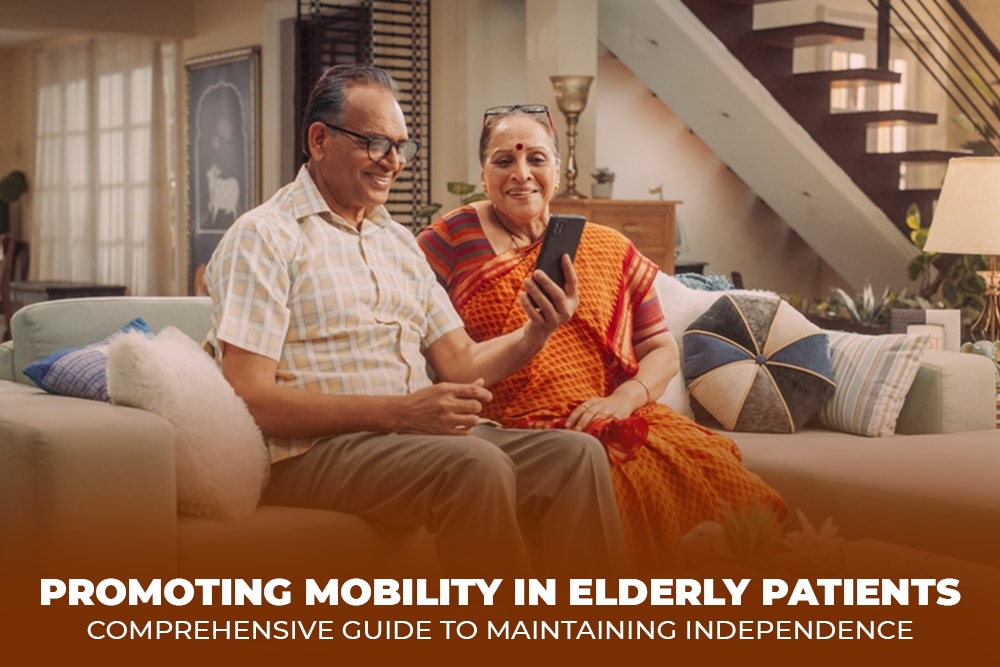As individuals age, maintaining mobility becomes increasingly crucial for their overall well-being and quality of life. For elderly patients, the ability to move freely and independently can significantly impact their daily activities and overall health. In this detailed guide, we will delve into the importance of mobility in elderly patients and provide a comprehensive set of tips and strategies to promote and maintain their mobility, ultimately enhancing their independence and quality of life.
The Significance of Mobility for Elderly Patients
Mobility is a fundamental aspect of daily living for elderly individuals. It enables them to perform essential tasks such as walking, standing up, and navigating their surroundings safely. Preserving mobility is vital for maintaining independence, reducing the risk of falls, and preventing the development of chronic conditions associated with a sedentary lifestyle.
Key Strategies for Promoting Mobility
1. Regular Physical Activity
Encouraging elderly patients to engage in regular physical activity is paramount for promoting mobility. Activities such as walking, tai chi, water aerobics, and chair exercises can help improve balance, flexibility, muscle strength, and cardiovascular health. Tailoring exercise programs to individual needs and abilities is crucial for ensuring safety and efficacy.
2. Assistive Devices and Mobility Aids
Utilizing assistive devices such as canes, walkers, wheelchairs, and grab bars can enhance mobility and provide additional support for elderly patients. These aids can improve stability, reduce the risk of falls, and increase confidence in performing daily tasks independently.
3. Home Environment Modifications
Making modifications to the home environment can greatly impact an elderly person’s mobility and safety. Simple changes such as installing handrails, grab bars, non-slip flooring, adequate lighting, and removing clutter can create a more accessible and secure living space for elderly individuals.
4. Fall Prevention Strategies
Implementing fall prevention strategies is essential for maintaining mobility in elderly patients. This includes conducting fall risk assessments, removing hazards in the home, wearing appropriate footwear, and ensuring proper vision and hearing care. By reducing the risk of falls, elderly individuals can maintain their independence and mobility.
5. Comprehensive Health Assessments
Regular health assessments by healthcare providers are crucial for monitoring the overall health and mobility of elderly patients. Healthcare professionals can identify mobility limitations, provide interventions such as physical therapy or occupational therapy, and offer guidance on maintaining an active lifestyle.
6. Nutritional Support and Hydration
Proper nutrition and hydration play a significant role in supporting mobility in elderly patients. A balanced diet rich in nutrients, adequate hydration, and appropriate caloric intake can help maintain muscle strength, energy levels, and overall physical function.
7. Social Engagement and Emotional Well-being
Promoting social engagement and emotional well-being is integral to maintaining mobility in elderly patients. Encouraging participation in social activities, hobbies, and community events can enhance mental health, reduce feelings of isolation, and contribute to overall well-being.
Conclusion
Promoting mobility in elderly patients is essential for enhancing their quality of life, independence, and overall well-being. By incorporating a holistic approach that includes regular physical activity, assistive devices, home modifications, fall prevention strategies, comprehensive health assessments, nutritional support, and social engagement, healthcare providers can effectively support elderly individuals in maintaining mobility and enjoying a fulfilling lifestyle. Prioritizing mobility not only benefits physical health but also fosters emotional wellness and social connectedness in elderly patients.
Remember, each individual is unique, so personalized care and tailored interventions are key to promoting successful aging and preserving independence in elderly patients.


